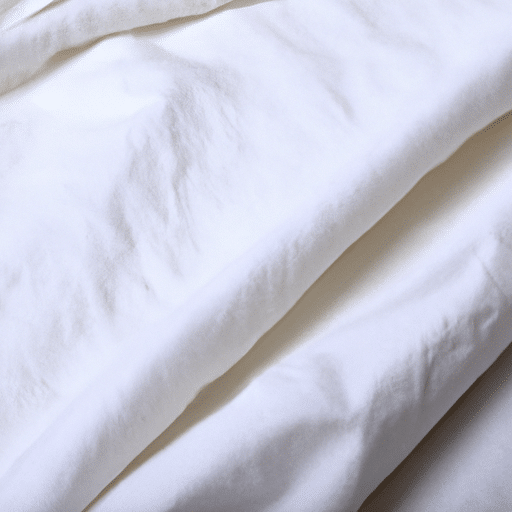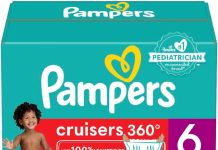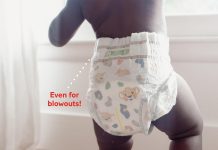When it comes to selecting a changing pad fabric that provides optimal breathability, there are a few key factors to consider. We all want our little ones to feel comfortable during diaper changes, and choosing the right fabric can make all the difference. From natural fibers to moisture-wicking materials, this article will guide you through the various options available, helping you make an informed decision that ensures your baby stays cool and content. So, let’s get started on the quest for the perfect changing pad fabric that will keep your baby comfy and happy!
Review contents
Factors to Consider
When it comes to choosing the fabric for a changing pad, there are a few key factors that ought to be considered. By taking these factors into account, we can ensure that we select a fabric that provides optimal breathability, comfort, and durability.
Type of Fabric
The type of fabric used for a changing pad can greatly impact its breathability. There are various options available, each with its own set of characteristics. Natural fabrics, such as cotton, bamboo, and linen, are known for their breathability and comfort. Synthetic fabrics like polyester and microfiber can also provide certain benefits. Additionally, blended fabrics, such as cotton-polyester and cotton-bamboo blends, can offer a combination of qualities from different materials.
Weave and Texture
The weave and texture of the fabric can significantly impact its breathability as well. Fabrics with a looser weave tend to have better airflow, allowing for increased breathability. Mesh fabrics, for instance, have an open and porous structure that promotes air circulation. On the other hand, fabrics with a tighter weave may restrict airflow and hinder breathability.
Breathability Ratings
Some fabrics are specifically designed to enhance breathability. They may have breathability ratings that indicate their effectiveness in allowing air to pass through. Fabrics with high breathability ratings are often recommended for items such as changing pads, as they can help prevent excessive heat and moisture buildup, providing a more comfortable experience for both the parent and the baby.
Moisture-Wicking Capability
Moisture-wicking capability refers to the fabric’s ability to pull moisture away from the skin and onto the surface, where it can evaporate more easily. This property is particularly important for changing pads, as it helps keep the baby dry and comfortable. Fabrics with good moisture-wicking capability can prevent the accumulation of sweat, reducing the risk of irritation or discomfort.
Natural Fabrics
Natural fabrics are a popular choice for changing pads due to their breathability and softness. Here are a few examples of natural fabrics commonly used in this context:
Cotton
Cotton is a versatile and widely used fabric known for its softness and breathability. It allows air to circulate, keeping the changing pad cool. Cotton is also gentle on the baby’s skin and hypoallergenic, making it a suitable choice for those with sensitive skin or allergies.
Bamboo
Bamboo fabric is gaining popularity due to its eco-friendly nature, softness, and breathability. It has natural moisture-wicking properties, making it suitable for changing pads. Bamboo fabric is also hypoallergenic, antibacterial, and odor-resistant, making it an excellent choice for those concerned about hygiene.
Linen
Linen is a lightweight and breathable natural fabric made from flax fibers. It has excellent moisture absorption and ventilation properties, making it ideal for changing pads. Linen is also known for its durability and ability to resist bacteria and mold growth.
Synthetic Fabrics
Synthetic fabrics offer their own set of advantages for changing pads. While they may not possess the same level of breathability as natural fabrics, they often have other desirable qualities. Here are a couple of common examples:
Polyester
Polyester is a synthetic fabric widely used in various industries, including the production of changing pads. It is known for its durability, wrinkle resistance, and ease of care. While polyester may not be as breathable as natural fabrics, it can still provide a comfortable surface for the baby. Additionally, polyester is stain-resistant, making it a practical choice for changing pads that may encounter spills and accidents.
Microfiber
Microfiber is a soft and lightweight synthetic fabric that is commonly used in changing pads. It has excellent moisture-wicking properties, helping to keep the baby dry during diaper changes. Microfiber is also durable, stain-resistant, and quick-drying, making it a convenient choice for busy parents.
Blended Fabrics
Blended fabrics combine the qualities and characteristics of different materials, offering a balance of benefits. Here are a couple of common examples of blended fabrics used in changing pads:
Cotton-Polyester Blend
Cotton-polyester blends are a popular choice for changing pads, as they combine the softness and breathability of cotton with the durability and wrinkle resistance of polyester. This type of blend is easy to care for and can provide a comfortable surface for the baby.
Cotton-Bamboo Blend
Cotton-bamboo blends offer the best of both worlds, combining the breathability and softness of cotton with the moisture-wicking and antibacterial properties of bamboo. This blend can provide a comfortable and hygienic surface for diaper changes, ensuring the baby remains dry and comfortable.
Additional Considerations
While breathability is a crucial factor to consider when choosing changing pad fabric, there are a few additional considerations to keep in mind:
Ease of Cleaning
Changing pads can get dirty quickly, so it’s essential to choose a fabric that is easy to clean. Fabrics that are machine washable and quick-drying can save parents valuable time and effort. Additionally, fabrics that resist stains or are easy to spot clean can help prolong the lifespan of the changing pad.
Durability
Changing pads are subjected to frequent use and may undergo various stresses, so durability is an important consideration. Fabrics that are strong, tear-resistant, and can withstand repeated washing and handling are ideal for ensuring the longevity of the changing pad.
Chemical Sensitivities
Some babies may have sensitivities to certain chemicals or dyes used in fabrics. If your baby has sensitive skin or allergies, it is important to choose a fabric that is hypoallergenic, free from harmful substances, and suitable for their needs. Natural fabrics like cotton, bamboo, and linen are generally considered safer options for those with chemical sensitivities.
By considering the type of fabric, weave and texture, breathability ratings, moisture-wicking capability, and additional factors such as ease of cleaning, durability, and chemical sensitivities, we can make an informed decision when choosing the fabric for a changing pad. Ultimately, the goal is to provide a comfortable, hygienic, and safe surface for our little ones during diaper changes.






























